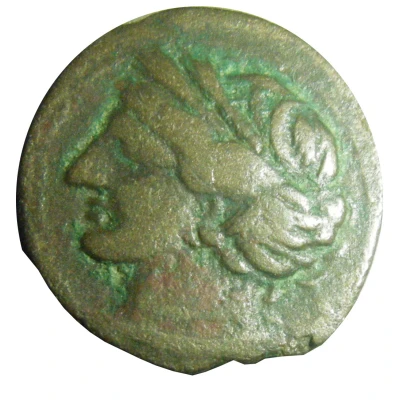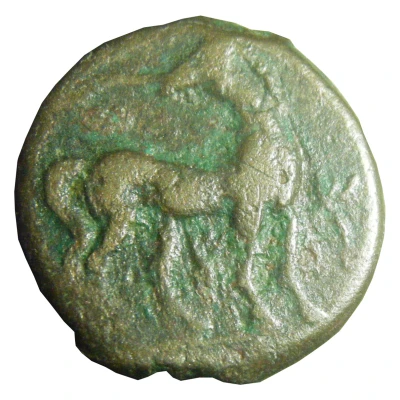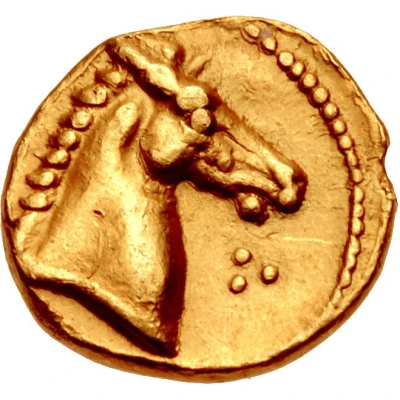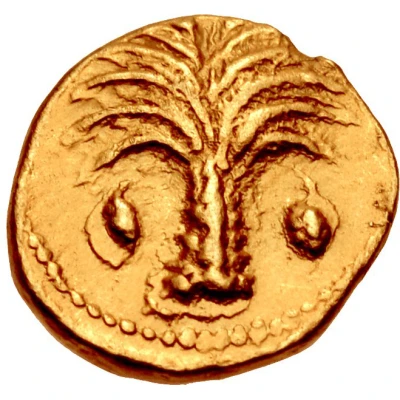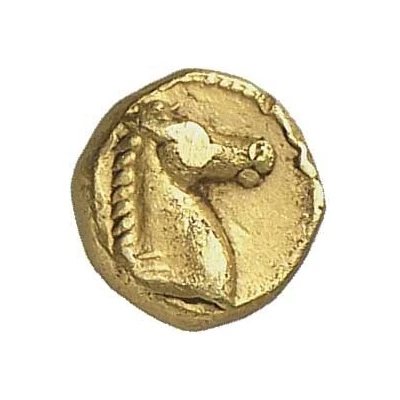
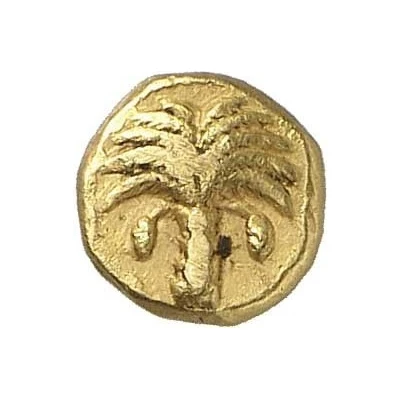

© Maison Palombo
⅒ Stater Carthage 350 BC - 320 BC
| Gold | 1.09 g | - |
| Issuer | Carthage (Zeugitana) |
|---|---|
| Type | Standard circulation coin |
| Years | 350 BC - 320 BC |
| Value | ⅒ Gold Stater (6⁄5) |
| Currency | Shekel |
| Composition | Gold |
| Weight | 1.09 g |
| Shape | Round (irregular) |
| Technique | Hammered |
| Demonetized | Yes |
| Updated | 2024-10-09 |
| Numista | N#116483 |
|---|---|
| Rarity index | 95% |
Reverse
Palm tree
Interesting fact
The ⅒ Stater coin from Carthage (Zeugitana) was used as a form of currency in the ancient city of Carthage, which was located in present-day Tunisia. The coin was made of gold and weighed 1.09 grams, making it a valuable and highly sought-after form of currency in its time. It's interesting to note that the coin's design features a stylized image of a horse's head, which was a symbol of strength and power in ancient Carthage. The coin's reverse side features a Phoenician inscription that reads "𐤒𐤒𐤓𐤒𐤓𐤕𐤒𐤓𐤕𐤇𐤒𐤓𐤕𐤇𐤃𐤒𐤓𐤕𐤇𐤃𐤔𐤒𐤓𐤕𐤇𐤃𐤔𐤕 𐤔𐤔𐤕𐤔𐤕𐤇𐤔𐤕𐤇𐤃𐤔𐤕𐤇𐤃𐤔𐤔𐤕𐤇𐤃𐤔𐤕" (QRTHDŠT, "of Carthage, the great city"). Overall, the ⅒ Stater coin from Carthage (Zeugitana) is a fascinating piece of history that provides a glimpse into the economic and cultural practices of ancient Carthage.
